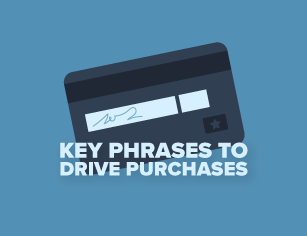Consumer attention is today’s holy grail, but the fight to win it has never been more competitive. Fortunately, programmatic advertising is helping marketers cut through the noise around consumers with ultra-precise targeting and ad placement, so audiences are more likely to take notice and engage.
As a category, programmatic ad spend will make up 90% of digital display ad spend in the U.S. by the end of 2023, and only continue to grow. CPG brands must use programmatic advertising to tailor messages, stay competitive, and reach the best leads. Brands can maximize ROI on programmatic advertising by optimizing their demand side platform (DSP) against specific key performance indicators (KPIs). Read on to learn how brands can define the best KPIs for their retail DSP.

The Programmatic Advertising Success Metrics to Know
A DSP is a technology platform used by digital marketers to programmatically buy ads and manage their campaigns across various online channels. With a DSP, they can target specific audiences and optimize ad placements in real-time auctions through a centralized interface that maximizes efficiency and performance.
Ultimately, maximizing ROI with programmatic advertising is about understanding exactly which KPIs you’re trying to improve, and optimizing your DSP to focus on them. Here are six of the best KPIs for a retail DSP to measure:

Impressions
Impressions indicate how many times an ad was viewed by consumers. Monitoring impressions allows brands to evaluate the effectiveness of ad placements and adjust targeting to reach the right audience.

Clicks
Clicks represent user engagement with an ad. Clicks can be a sign of higher quality traffic, as users are actively interested in the offer or message they’re seeing.

Click-Thru Rate (CTR)
This KPI measures the ratio of clicks to impressions, and how effective it is in persuading users to take action. CTR helps assess the performance of different ad creatives and messages, and can even guide A/B testing and creative optimization.

Detailed Page Views
Detailed page views go beyond clicks and measure how many users engaged further by visiting multiple pages on a website or app. Users who explore multiple pages are often more likely to convert, making this KPI a strong indicator of conversion potential and one of the best KPIs for a retail DSP.

Return on Ad Spend (ROAS)
This KPI measures the revenue generated relative to the advertising spend. It directly reflects the financial impact of a programmatic ad campaign.

Total Sales
Total sales quantify the direct impact of a programmatic advertising campaign on sales revenue. Tracking total sales helps attribute conversions to specific advertising channels or campaigns, allowing you to allocate budget effectively.
Maximizing Your Best KPIs for Retail DSP
With these KPIs in mind, marketers must take additional steps to optimize their retail DSP. Here’s how brands can maximize results from the best KPIs for a retail DSP:
- Define General Goals
Begin by defining specific, measurable, and achievable campaign objectives. Is the goal to increase brand awareness, drive sales, or generate leads? At the same time, determine the KPIs that align with the goal. For example, if the goal is to drive sales, the KPIs to focus on may include ROAS, conversion rate, and total sales. - Assess Resource Limitations
Be aware of budget constraints and allocate resources accordingly, including ad spend, creative production costs, and any additional expenses related to the campaign. - Choose the Right DSP
Before selecting a DSP, research the market thoroughly to identify the platform that best aligns with campaign goals, target audience, and budget. Consider factors like available inventory, targeting capabilities, and pricing models. Choose a DSP that provides access to the right publishers, data sources, and ad formats to reach the target audience most effectively, and that it integrates seamlessly with the existing technology stack. - Leverage Data for Ongoing Improvement
During and after campaigns, analyze the collected data to gain insights into what’s working and what’s not. Shift budget toward high-performing ad sets or channels, and adjust bidding strategies to maximize ROI. Avoid ad fatigue by setting frequency caps to limit the number of times users see ads, and conduct A/B tests to experiment with different messaging and targeting options.
Make the Most of a Retail DSP With Power Marketing
Identifying and implementing the best KPIs for your retail DSP takes decades of expertise and insight into best practices. That’s why partner agencies like Power Marketing are so important. The team has lived and breathed digital marketing for more than 20 years, and is an industry leader in programmatic advertising. Get in touch to learn more about our capabilities.


